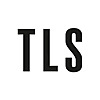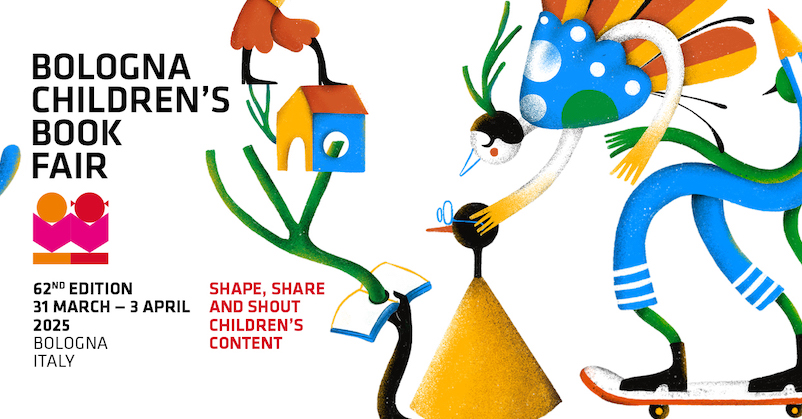On February 15, 1995, the artist and self-described “non-musician” Brian Eno discussed with his wife, Anthea, the consequences of giving computers to children. “She’s suspicious”, he notes in his diaries. “Secretly so am I, but I defend them to see if they can be defended.” Eno, a sort of polymath visionary, is arguably one of popular music’s most avant-garde figures. In 1975, he released the album Discreet Music, “in which”, he writes, “two simple melodic cycles of different durations separately repeat and are allowed to overlay each other arbitrarily”. Potentially infinite in combination (though in its original form limited by the length of one side of an LP), the title track is considered the first example of “ambient” music, a term he coined three years later for the next album he made with a similar process, Music for Airports. Fifty years later, after a career that has spanned producing albums for David Bowie and designing illuminated turntables, Eno remains at the forefront of how technology can innovate art. He is, unsurprisingly, engaged with the creative potential of artificial intelligence, having used it, in far less advanced forms, in several of his previous instrumental albums and apps. Even the documentary Eno, directed by Gary Hustwit in 2024, used generative algorithms to create unique versions for every screening.
One of Eno’s most recent projects, What Art Does: An unfinished theory, co-authored with the Dutch artist Bette A., turns his attention to a general theory about art. A pocket-sized hardcover in white and pink, it seems at first glance to take its ambitions lightly. Inside, amid Bette A.’s playful illustrations, Eno, in a plain-spoken and direct style, attempts a pragmatic yet sophisticated defence, bringing together ideas he has been exploring since the 1990s. While we see that humans everywhere enjoy art, we have little sense of what it actually does, he claims. No wonder some governments marginalize it. To argue for it, he says, we need to understand it.
Eno imagines a continuum from the humblest human activities, such as cutting hair (not how an artist might propose cutting hair as an artwork in a gallery, but actual haircuts), to the most remarkable aesthetic achievements – a symphony, poem or painting. What, according to him, unifies these varied things? They are how we explore feelings. And how does that happen? The further art gets from utility, he argues, the greater freedom it has to explore the range of human emotions: “The art engagement begins where the functional engagement ends.” It’s a rather standard definition advanced since the Enlightenment, to be sure. But what is refreshing about his formulation is that it includes things that are tied to utility without abandoning the autonomy associated with more traditional artforms. Most aesthetic theories claim one or the other, beauty or function; Eno leaves space for both. “Art,” he says, “only happens when there is room for options, where things can be fundamentally otherwise.” He envisions an avant-garde approach that is both generative and inclusive, a general theory for everyone and anyone.
But what is meant here by “avant-garde”? It’s a word that is often used rather loosely. “The term ‘avant-garde’”, writes Morgan Falconer, “first came into use in Paris at the turn of the twentieth century and pointed to artists who were behaving in distinctly new ways.” His new book, How to Be Avant-Garde: Modern artists and the quest to end art, explores how those artists attempted to destroy a bourgeois understanding of art, replacing it with something that merged with daily life. “Art needed to end”, Falconer writes, “and in various places across Europe and beyond, groups got together to work out how that might be done.” Like Roger Shattuck’s The Banquet Years: The origins of the avant-garde in France, 1885 to World War 1 (1955), Falconer’s book presents critical biographies of a variety of modernists. From André Breton to Robert Smithson, the book nimbly threads the stories of many figures into a coherent and pleasurable read. We encounter, for example, the young Filippo Tommaso Marinetti stargazing in Alexandria, years before his return to Italy to champion futurism, the wild bohemian nights of Emmy Hennings and Hugo Ball in Zürich at the birth of Dada, as well as Guy Debord’s drunken dérives across Paris with other members of the Situationist International, smoking hash on the banks of the Île de la Cité. With a talent for setting the scene and rendering vivid portraits, Falconer brings the stories of these artists, each with conflicting agendas, into one comprehensible argument. The lightness of his critical touch does a service, too, because it manages to take a rather theoretically dense premiss, illustrating the radical aims of the historical avant-garde, without recourse to academic jargon.
How to Be Avant-Garde resonates today because the pressures of widening economic disparities and contemporary tech make the idea of merging art and life feel current, for a variety of reasons. Falconer frames the book with anecdotes about how his idea came together (spoiler: it’s from the feeling of alienation experienced at the big shopping malls of the art world, its fairs) but could have benefited from more examples of twenty-first-century artists who carry on the legacy, even transform it. “It is easier”, he admits, “to imagine Louis Vuitton or Ikea as magicians of a total environment than it is to envision some brandless utopian language showing the way.” Indeed. Art may not have merged with life, but for commercial reasons it appears to be merging with lifestyle. Mega-galleries are investing in hotels and restaurants; a press release from Almine Rech recently promised “a tasting of bespoke cocktails” by a spirits company after an art event. “All this growth should surely bring art ever closer to our ordinary lives”, Falconer writes, “and yet all the wealth that nurtures it seems only to increase its aura of power and mystique, and hence its distance from us.”
Eno is, in many ways, an heir to a more traditional, “brandless” concept of the avant-garde. The generative music that he began making in the 1970s – which he called “as ignorable as it is interesting” – endeavoured to synthesize environment and music, an attempt of a sort to merge art and life. What Art Does is thus an unexpected extension of those sensibilities. His theory – that art allows humans to explore and engage in how they feel – conceives of artistic ideas as shared, from how we design a screwdriver to how we enjoy a picture. “When we see a new earring, or any artwork”, he writes, “we look at where this new one sits in our history of looking at artworks. It’s like being presented with the latest sentence in a long story.”
All of our collective aesthetic information is contained in what Eno calls the “cloud”. This metaphor, however, highlights one place where his ideas need development, because that word sounds too familiar to the modern ear, thus neglecting to take into account the way in which electronic devices all too often mediate our experience of art. (He has, in other places, been critical of the profit-driven model of tech, but those criticisms are absent here.) Our “cloud”, to a greater and greater extent, is no longer communal: it is a proprietary data set accessible only through a particular machine or service. Each of our little handhelds is governed by algorithms that limit what we see, effectively funnelling us into predetermined “clouds”. “Civilization”, Eno states, “is shared imagination” – which, in darker moments, provokes the question of whether we are indeed still civilized, as we head into even more digitally closed realities. He seems to hold on to hope, though, understanding technology as a tool to be used against its programming.
In terms of the avant-garde, the boldest ways in which art and life are merging, outside luxury lifestyle branding, can be seen in tech. David Hajdu’s The Uncanny Muse: Music, art, and machines from automata to AI begins from a moment of unease. In February 2019, the music critic attended the opening of Faceless Portraits Transcending Time, an exhibition at HC Contemporary that claimed to be the “first show of algorithmic art in a New York gallery”, a collaboration between a computer science professor at Rutgers University named Ahmed Elgammal and an algorithm he had programmed. For Hajdu, it spurred a number of questions – one being, “How new is this really?” And that led him to explore the extensive history of creativity and automation.
His story connects many unexpected people and things. There are descriptions of London’s longest-running variety-show automaton, Zoe, who at the end of the nineteenth century painted portraits on command from crowds. There’s the story of the rise of house music in New York, Chicago, and Detroit in the late 1970s, when crowds of mostly gay Black men experienced the liberating feeling of becoming a collective “machine” while dancing to electronically produced music. He tells us, too, of the American artist Harold Cohen, who from the late 1960s until his death in 2016, collaborated with an early bespoke computer programme named AARON, still functional after the painter died. “People and machinery have come together to make all kinds of art for a very, very long time, with the machines exerting influence on the art that’s made”, he writes.
Compelling for the way the author folds in his own research and interests, reminiscent of Charles Baudelaire’s comment that criticism should be “personal, passionate and political”, The Uncanny Muse skates over an impossibly large terrain. Hajdu reminds us what critics have often protested about machines: they cannot feel. Instead he gathers stories – from the early-twentieth-century popularity of player pianos to George Harrison’s use of the Moog syntheziser – to show how humans have worked with machines to innovate. An eclectic yet rigorous gathering, The Uncanny Muse is also interesting for what it excludes. The author hardly mentions Eno, except to call him a “futurist” in a larger anecdote about David Bowie. Reading this book feels a bit like learning how to stop worrying and love the bomb: “Growing in intelligence”, Hajdu writes, “machines may still have more to communicate, if we let them.”
The worry is not so much about generative AI changing creativity, however, as about the convergence of widening economic disparity and our reliance on tech – as we risk becoming “techno serfs”, to borrow an idea from Yanis Varoufakis – tethered to our devices, subscriptions and apps while a few huge companies accrue more wealth and power. These forces are achieving, for very different ends, what the avant-garde attempted: a kind of merging of art and life through technological means. How can art respond to such large cultural and economic transformations? Eno affirms that “what we need is already inside us”. He doesn’t question, for example, whether machines feel. He argues instead for art as “a way of making feelings happen”, a simulator to explore what it means to be human – and a place to imagine what we might lose. “Art”, he says, “is of no inescapable consequence.”
As consequences mount around us, our situation feels urgent. We need a new avant-garde, one that thinks “fundamentally otherwise” from how it has been co-opted. Brian Eno’s “unfinished theory” is a beginning.
Aaron Peck is the author of The Bewilderments of Bernard Willis, 2008, and Jeff Wall: North & West, 2016
The post Rebirth of the modern appeared first on TLS.

 By Times Literary Supplement | Created at 2025-04-02 12:32:30 | Updated at 2025-04-04 04:09:58
1 day ago
By Times Literary Supplement | Created at 2025-04-02 12:32:30 | Updated at 2025-04-04 04:09:58
1 day ago







